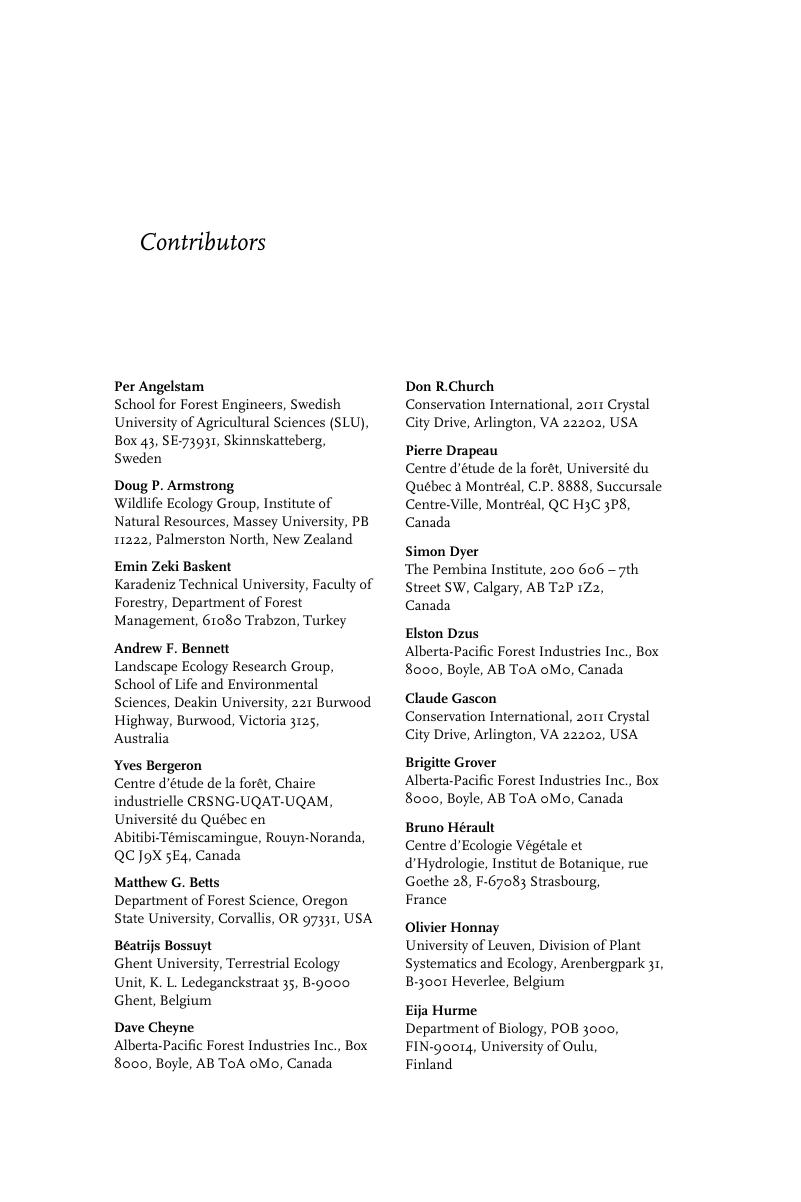Book contents
- Frontmatter
- Contents
- List of contributors
- Foreword
- Acknowledgements
- 1 A plea for quantitative targets in biodiversity conservation
- 2 Setting conservation targets: past and present approaches
- 3 Designing studies to develop conservation targets: a review of the challenges
- 4 Testing the efficiency of global-scale conservation planning by using data on Andean amphibians
- 5 Selecting biodiversity indicators to set conservation targets: species, structures, or processes?
- 6 Selecting species to be used as tools in the development of forest conservation targets
- 7 Bridging ecosystem and multiple species approaches for setting conservation targets in managed boreal landscapes
- 8 Thresholds, incidence functions, and species-specific cues: responses of woodland birds to landscape structure in south-eastern Australia
- 9 Landscape thresholds in species occurrence as quantitative targets in forest management: generality in space and time?
- 10 The temporal and spatial challenges of target setting for dynamic habitats: the case of dead wood and saproxylic species in boreal forests
- 11 Opportunities and constraints of using understory plants to set forest restoration and conservation priorities
- 12 Setting conservation targets for freshwater ecosystems in forested catchments
- 13 Setting quantitative targets for recovery of threatened species
- 14 Allocation of conservation efforts over the landscape: the TRIAD approach
- 15 Forest landscape modeling as a tool to develop conservation targets
- 16 Setting targets: tradeoffs between ecology and economics
- 17 Setting, implementing, and monitoring targets as a basis for adaptive management: a Canadian forestry case study
- 18 Putting conservation target science to work
- Index
List of contributors
Published online by Cambridge University Press: 05 June 2012
- Frontmatter
- Contents
- List of contributors
- Foreword
- Acknowledgements
- 1 A plea for quantitative targets in biodiversity conservation
- 2 Setting conservation targets: past and present approaches
- 3 Designing studies to develop conservation targets: a review of the challenges
- 4 Testing the efficiency of global-scale conservation planning by using data on Andean amphibians
- 5 Selecting biodiversity indicators to set conservation targets: species, structures, or processes?
- 6 Selecting species to be used as tools in the development of forest conservation targets
- 7 Bridging ecosystem and multiple species approaches for setting conservation targets in managed boreal landscapes
- 8 Thresholds, incidence functions, and species-specific cues: responses of woodland birds to landscape structure in south-eastern Australia
- 9 Landscape thresholds in species occurrence as quantitative targets in forest management: generality in space and time?
- 10 The temporal and spatial challenges of target setting for dynamic habitats: the case of dead wood and saproxylic species in boreal forests
- 11 Opportunities and constraints of using understory plants to set forest restoration and conservation priorities
- 12 Setting conservation targets for freshwater ecosystems in forested catchments
- 13 Setting quantitative targets for recovery of threatened species
- 14 Allocation of conservation efforts over the landscape: the TRIAD approach
- 15 Forest landscape modeling as a tool to develop conservation targets
- 16 Setting targets: tradeoffs between ecology and economics
- 17 Setting, implementing, and monitoring targets as a basis for adaptive management: a Canadian forestry case study
- 18 Putting conservation target science to work
- Index
Summary

- Type
- Chapter
- Information
- Publisher: Cambridge University PressPrint publication year: 2009

